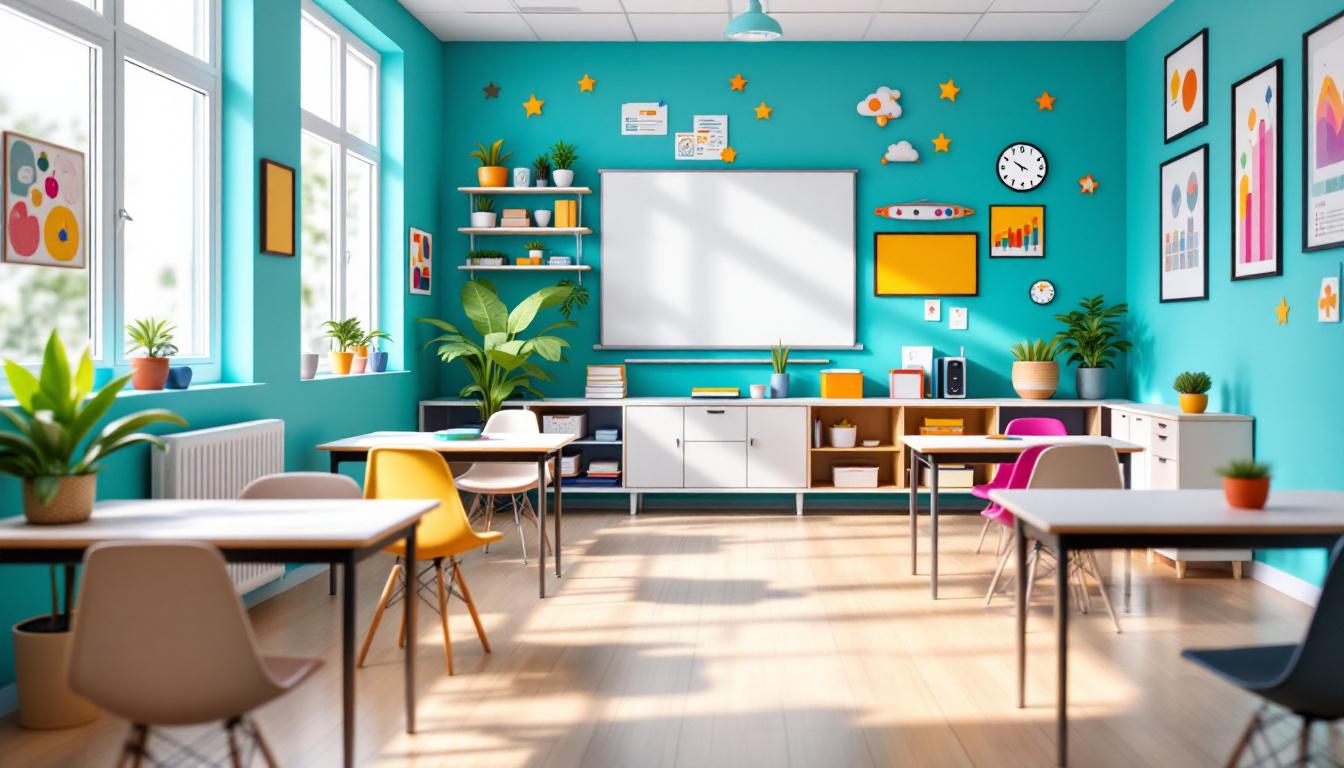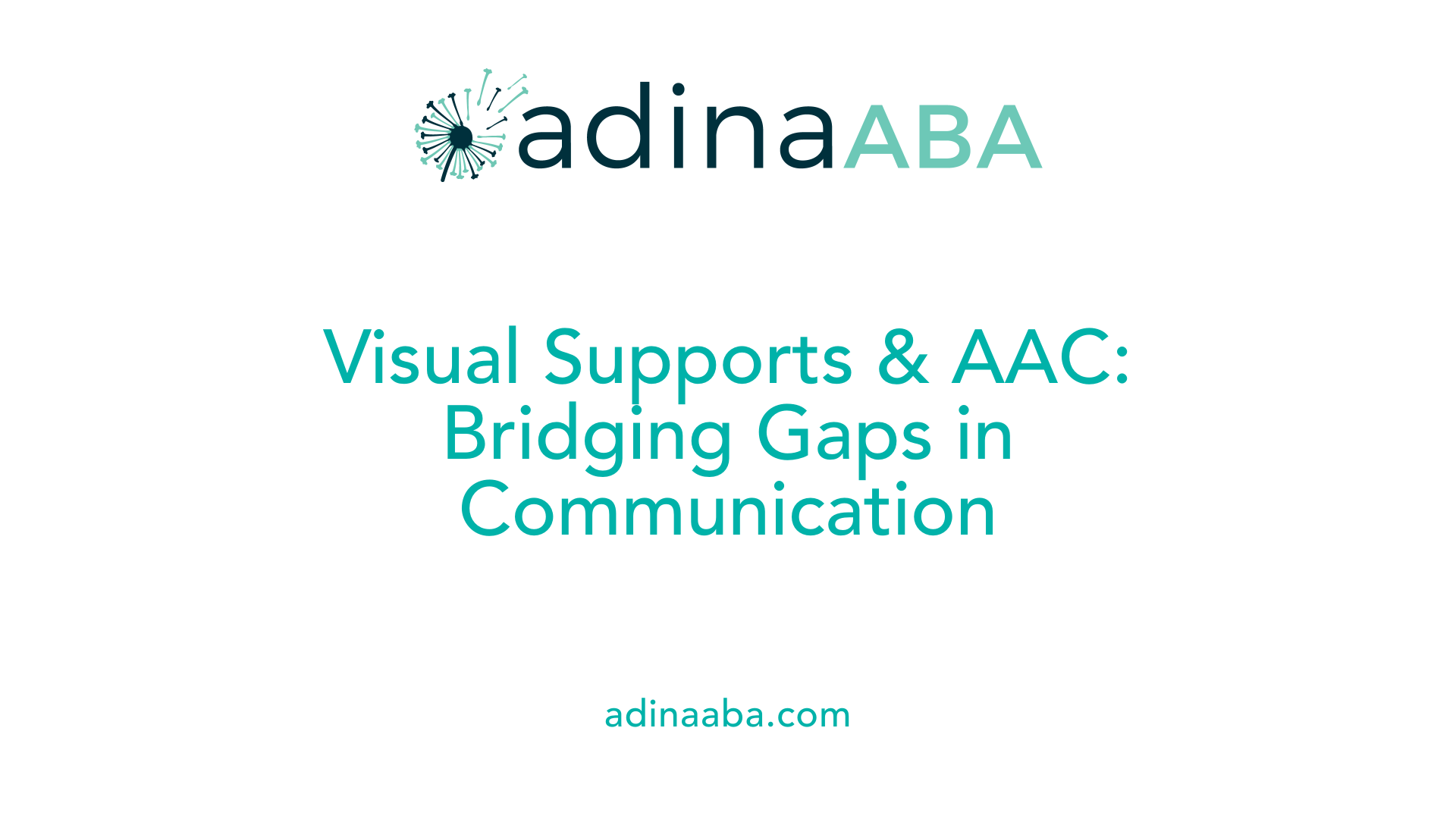How to support communication development in ABA

An In-Depth Exploration of Communication Support in ABA Therapy
Supporting communication development in children with autism through Applied Behavior Analysis (ABA) involves a comprehensive approach that combines evidence-based strategies, innovative tools, and active caregiver involvement. Early intervention amplifies these efforts, leveraging neuroplasticity during critical developmental periods to maximize progress. This article examines the various techniques employed in ABA therapy, the crucial role of parents and caregivers, and the integration of augmentative and alternative communication (AAC) systems to foster meaningful communication skills.
Core Strategies and Techniques in ABA for Communication Enhancement

What strategies and techniques are used in ABA to enhance communication skills?
Applied Behavior Analysis (ABA) employs several tailored strategies to boost communication abilities in children with autism. One fundamental method is Discrete Trial Training (DTT), which involves structured, repetitive teaching of specific skills, including language and social behaviors. This approach uses clear instructions, prompts, and reinforcement to help children acquire foundational communication skills.
Another essential technique is modeling and prompting. Therapists demonstrate desired behaviors, such as gestures or receptive language responses, and then guide children to imitate them through prompts. As children become more capable, prompts are gradually faded to encourage independent use.
Positive reinforcement remains central in ABA. When a child makes a communication attempt, whether verbal or non-verbal, immediate praise or rewards motivate continued effort and build confidence. Incorporating augmentative and alternative communication (AAC) tools like Picture Exchange Communication System (PECS), speech-generating devices, sign language, or communication boards helps nonvocal or minimally vocal children communicate effectively.
Functional Communication Training (FCT) is another vital component, teaching children appropriate ways to express their needs and feelings, thereby reducing problematic behaviors driven by communication frustrations. This method focuses on substituting challenging behaviors with functional communicative acts.
Overall, ABA combines behavioral techniques with AAC tools to create a comprehensive, individualized approach that encourages meaningful and practical communication development in children with autism.
How can parents and caregivers support communication development through ABA methods?
Parents and caregivers play a crucial role in reinforcing ABA strategies at home. Their active involvement includes participating in therapy sessions, following training instructions, and practicing communication skills in everyday routines. Consistency is vital; by replicating techniques such as prompting, reinforcing, and modeling behaviors learned during therapy, caregivers help children generalize skills across different settings.
Creating a predictable, structured environment with visual aids like picture schedules, visual cues, or social stories can make communication more accessible and meaningful. These supports help children understand expectations and facilitate independent use of communication methods.
Caregivers should collaborate closely with therapists to understand the behavior intervention plan (BIP), incorporate recommended reinforcement systems, and adapt strategies to fit their child's individual needs and cultural context. Open, empathetic, and responsive communication with the child, combined with emotional support, encourages children to attempt and practice new skills.
Monitoring progress, celebrating successes, and advocating for tailored interventions further support long-term communication growth. In this way, active participation at home complements clinical work, creating a consistent environment that fosters meaningful language and social skills.
The Role of Visual Supports and AAC in Communication Development

How do visual supports like pictures, symbols, and photographs aid children with autism?
Visual supports are fundamental strategies that help children with autism understand and communicate more effectively. By providing concrete images such as pictures or symbols, children can better comprehend abstract ideas and relate them to their experiences. Photographs of familiar objects or peopleEnable children to recognize and identify key elements in their environment. These supports reduce frustration, increase independence, and create a visual communication channel that complements verbal language, especially for children still developing speech skills.
Children use these tools to express needs, feelings, or desires, helping to bridge the gap between their thoughts and outward communication. Visual supports can be incorporated into daily routines, educational settings, and at home to reinforce understanding and encourage language development.
What are PEGs and speech-generating devices?
Picture Exchange Communication Systems (PECS) are among the most widely used AAC tools for children with limited or no speech. PECS involves teaching children to exchange pictures to communicate their needs and wants. This system starts with basic exchanges and gradually introduces more complex language structures.
Speech-generating devices (SGDs), often referred to as high-tech communication aids, are electronic devices that produce spoken words, phrases, or sentences when activated. These devices can be customized with various vocabulary sets and are especially useful for children with more advanced communication needs. They provide a voice for children who cannot communicate verbally, helping them participate more fully in social and educational settings.
How do augmentative and alternative communication systems support children with minimal speech?
AAC systems serve as crucial tools for children with minimal or no speech, offering alternative means to express themselves. These systems increase the child's ability to initiate communication, request objects or assistance, and participate in social interactions. Consistent use of AAC promotes a sense of independence and reduces frustration caused by communication barriers.
For example, sign language can be integrated alongside picture cards or devices, offering multiple channels for expression. When embedded within a supportive environment, AAC fosters confidence and helps children develop more advanced communication skills over time.
How does visual support contribute to creating a communication-rich environment?
Creating an environment filled with visual supports encourages language use and interaction. This includes placing visual aids like charts, labels, and social stories in accessible areas. Such tools help children understand routines, expectations, and social cues.
In a communication-rich environment, children are exposed to a variety of visual stimuli that promote curiosity and learning. For example, labeled toy bins or pictures illustrating daily activities help children link words with objects or actions, boosting vocabulary and comprehension.
To facilitate this, educators and caregivers often integrate visual supports into daily routines, making communication seamless and meaningful.
| Visual Support Type | Purpose | Common Uses | Benefits |
|---|---|---|---|
| Pictures and photographs | Enhance understanding | Receptive language, social cues | Improve comprehension and reduce frustration |
| Symbols and icons | Support expressive language | Choice making, requests | Encourage independence and decision-making |
| Visual schedules | Predictability and routine management | Daily activities, transitions | Reduce anxiety and promote independence |
| Social stories | Social skill development | Situational understanding | Clarify social expectations and responses |
What is the role of AAC in supporting children with delayed speech?
AAC is integral in helping children with delayed speech overcome communication barriers. Whether through low-tech options like simple picture boards or high-tech speech-generating devices, AAC provides immediate functional communication during early development stages.
Implementing AAC promotes social interaction and reduces frustration by giving children a voice to express their needs and desires. It also helps in establishing routines and facilitates learning by enabling children to participate actively in classroom and social activities.
By offering tailored systems that match each child's developmental level and preferences, AAC empowers children with delayed speech to develop their language skills gradually and meaningfully.
In summary, visual supports and AAC systems form a vital part of a comprehensive communication development strategy. When used consistently within a supportive environment, they significantly enhance a child's ability to connect, learn, and thrive socially.
Naturalistic and Developmental-Pragmatic Approaches to Communication

How do incidental teaching, mand-modeling, and milieu teaching promote communication development?
These naturalistic strategies are designed to embed communication learning into everyday routines and interactions. Incidental teaching involves naturally occurring opportunities where the child is encouraged to communicate to get what they want. For example, a caregiver might wait for the child to point or gesture before providing a desired object, gently prompting if needed.
Mand-modeling is about teaching children to make specific requests or mands by modeling the desired behavior during natural activities. If a child looks at a snack, the adult might say, "Do you want the cookie?" prompting the child to imitate or request.
Milieu teaching involves structuring the environment to increase the likelihood of communication attempts. This could mean placing preferred toys or objects out of easy reach, encouraging the child to ask for help or use gestures. These approaches promote spontaneity and encourage children to initiate communication in familiar settings.
What is Floor Time and RDI, and how do they support communication?
Floor Time and the Relationship Development Intervention (RDI) approach focus on following the child's lead through play and daily routines. Instead of direct instruction, these methods foster social and emotional development by engaging with the child's interests.
In Floor Time, caregivers and therapists join the child in activities they enjoy, building rapport and encouraging social interaction. This approach helps children develop joint attention, emotional regulation, and language skills by promoting natural communication.
RDI emphasizes creating shared experiences and guiding children to develop independence in social connections. It involves scaffolding routines that naturally incorporate communication, such as sharing a toy or describing an action.
How does fostering social initiation and turn-taking benefit children with autism?
Encouraging children to initiate interactions and take turns are fundamental for developing effective communication and social skills. Activities that promote these skills include games like 'peek-a-boo,' turn-based play, and conversational exchanges during routines.
By practicing initiating greetings, requesting items, or commenting on activities, children learn to express their needs and interests directly. Turn-taking activities build patience, listening, and reciprocal engagement, which are essential components of conversation.
Supporting social initiation and turn-taking helps children better understand social cues, enhances peer interactions, and paves the way for more complex communication.
How do naturalistic methods compare to structured behavioral approaches?
Naturalistic strategies such as incidental teaching, mand-modeling, milieu teaching, and Floor Time are rooted in engaging children in meaningful contexts. They promote spontaneous communication and are highly adaptable to the child's interests.
In contrast, structured approaches like Discrete Trial Instruction focus on teaching specific skills through repetitive, highly organized sessions. Both methods can be complementary; naturalistic approaches often help generalize skills learned in more structured settings.
What is the role of parents and caregivers in supporting communication using these approaches?
Parents and caregivers play a vital role by creating a rich language environment at home. They can incorporate strategies like modeling, reinforcing communication attempts, and following the child's lead during play.
Using visual supports, simplifying language, and engaging in routines help children understand when and how to communicate.
Encouraging consistent practice across settings ensures skills are integrated into daily life, leading to more meaningful communication development.
Integrating Peer and Parent-Mediated Interventions

How do ABA programs foster social interaction and peer engagement?
ABA therapy emphasizes the importance of naturalistic and structured activities that promote social engagement among children with autism. Facilitating mediated peer interactions in familiar settings ensures that children can practice social skills in real-world contexts.
In group therapy sessions, therapists create opportunities for children to observe, imitate, and respond to social cues, which helps them learn reciprocal communication. These interactions allow children to initiate conversations, take turns, and respond appropriately, reinforcing their social and verbal skills.
Such peer-led activities not only improve communication but also boost confidence and motivation. Incorporating peer strategies into daily routines makes social learning more meaningful and relevant, encouraging children to generalize skills across environments.
Additional insights:
| Strategy | Application | Purpose |
|---|---|---|
| Mediated peer interactions | Structured group activities in natural settings | Reinforce social and communication skills |
| Observation and imitation | Children observe peers and imitate actions | Promote social awareness and engagement |
| Naturalistic learning | Using everyday routines to facilitate social exchanges | Generalization of communication skills |
How can parents and caregivers assist communication development via ABA methods?
Parents and caregivers play a vital role in reinforcing ABA interventions at home. Active involvement includes attending training sessions, observing therapy, and practicing strategies regularly.
Consistency is crucial. By working closely with speech-language pathologists and ABA therapists, caregivers can understand the behavior intervention plan (BIP) and implement reinforcement techniques that encourage communication. For instance, praising attempts at speaking or using visual supports can motivate children.
Creating predictable routines and using visual aids like symbols, pictures, or photos helps children understand expectations and facilitates language use across different settings. Culturally responsive practices and empathetic communication strengthen this collaborative effort.
Monitoring progress and maintaining open communication with therapists ensure that intervention strategies are adapted to meet the child's evolving needs. Providing emotional support and encouragement helps build confidence and further promotes meaningful communication.
Summary Table:
| Parent Role | Action Items | Expected Outcome |
|---|---|---|
| Active participation | Attend sessions, observe, practice skills | Consistent implementation of strategies |
| Collaboration with professionals | Understand therapy plans, provide feedback | Tailored approaches to child's needs |
| Routine and visual supports use | Incorporate visual aids, simplify language | Improved understanding and generalization |
| Emotional and motivational support | Praise efforts, celebrate successes | Increased motivation and confidence |
Supporting the Generalization of Skills
One of the main objectives in communication interventions is ensuring that skills learned in therapy transfer seamlessly to everyday environments. This can be achieved through:
- Using everyday routines consistently in natural settings.
- Incorporating peer interactions that mimic real-world social situations.
- Training parents and teachers to reinforce communication attempts in various contexts.
- Using visual supports to bridge understanding across environments.
This comprehensive approach helps children with autism develop functional communication skills that are practical and sustainable in their daily lives. As children succeed in diverse situations, their confidence and social motivation continue to grow, leading to long-term success in their communication journey.
Conclusion and the Path Forward in Communication Support
Summarizing Effective Strategies for Communication Development
Children with autism benefit from a multifaceted approach to enhance their communication skills. Early intervention forms the foundation, utilizing techniques like Applied Behavior Analysis (ABA), which employs structured methods such as discrete trial training and naturalistic strategies like incidental teaching and milieu teaching. Employing visual supports—pictures, symbols, and communication devices—alongside augmentative and alternative communication (AAC) systems like sign language and PECS broadens expressive abilities.
Activities that promote joint attention, turn-taking, and social stories foster better social understanding. Creating a communication-rich environment filled with books, toys, and interactive activities encourages spontaneous language use. Recognizing individual differences through personalized plans ensures interventions are relevant, engaging, and effective.
Parents and caregivers play a vital role by supporting routines, engaging in play, and actively mimicking children’s cues, which reinforces learning outside therapy sessions. Collaboration among speech-language pathologists, ABA therapists, educators, and families maximizes progress, ensuring strategies are consistent and tailored.
Why Early and Personalized Intervention Matters
Starting intervention early taps into the brain’s neuroplasticity during critical developmental windows, making services more effective. Tailoring plans to each child's needs—covering aspects from foundational gestures to complex social skills—enhances learning and motivation.
Research shows early, individualized programs can significantly improve both verbal and nonverbal communication, support social engagement, and reduce challenging behaviors. These advances lay a strong groundwork for future independence, academic success, and improved quality of life.
The Role of Teamwork Across Disciplines
Effective communication interventions depend on the collaboration of a multidisciplinary team. Speech-language therapists, ABA specialists, and educators work closely with families to design, implement, and adjust strategies. This teamwork ensures that approaches are consistent across settings and aligned with the child's evolving needs.
Sharing insights and observations leads to more refined, relevant interventions that support generalization of skills beyond therapy sessions. Regular assessment and feedback loops are crucial for tracking progress and making necessary adjustments.
Future Steps in Optimizing Communication Strategies
Looking ahead, advancements in technology and research will continue shaping autism communication support. Emerging tools like high-tech communication aids and AI-driven apps are poised to personalize learning further.
Integrating naturalistic and developmental-pragmatic methods with traditional behavioral approaches promises a more holistic and engaging experience for children. Emphasizing mediated peer interactions and using everyday routines can enhance real-world applicability.
Ongoing training for caregivers and professionals will be essential to keep pace with innovations. Future research aims to identify the best practices for individual differences, maximizing functional communication while reducing reliance on standardized methods.
In summary, building on early, tailored interventions and fostering collaboration among all stakeholders will propel progress in supporting children with autism to communicate effectively. This integrated approach aims to unlock each child's full potential, ensuring they can connect, learn, and thrive in the community.
Empowering Communication through Informed and Individualized Approaches
Supporting communication development in children with autism through ABA requires a multifaceted, personalized approach that integrates evidence-based techniques, assistive communication technologies, and active involvement from families and professionals. Early intervention maximizes neuroplasticity, enabling children to acquire essential social and verbal skills that foster independence and social integration. A collaborative effort, incorporating naturalistic methods, peer, and parent-mediated strategies, enhances skill generalization and real-world application. As research continues to evolve, so will the tools and methods available, promising an optimistic future where every child with autism can reach their full communicative potential and enjoy meaningful social engagement.
References
- Supporting Communication Development: Tips & Techniques
- Interventions to Improve Communication - PMC - PubMed Central
- How ABA Therapy Improves Communication and Language Skills
- Helping Parents Understand Applied Behavior Analysis: Creating a ...
- Impact of ABA Therapy: The Key Role of Parental Involvement
- The Role of Family in ABA Therapy: Tips for Parents
- The Art of Talking to Parents in ABA: Tips and Best Practices
- Tips Effective Parent-Teacher Communication During ABA Therapy
- Applied Behavior Analysis (ABA) | Autism Speaks
More Resources
Expert Clinicians
Get started today ->






